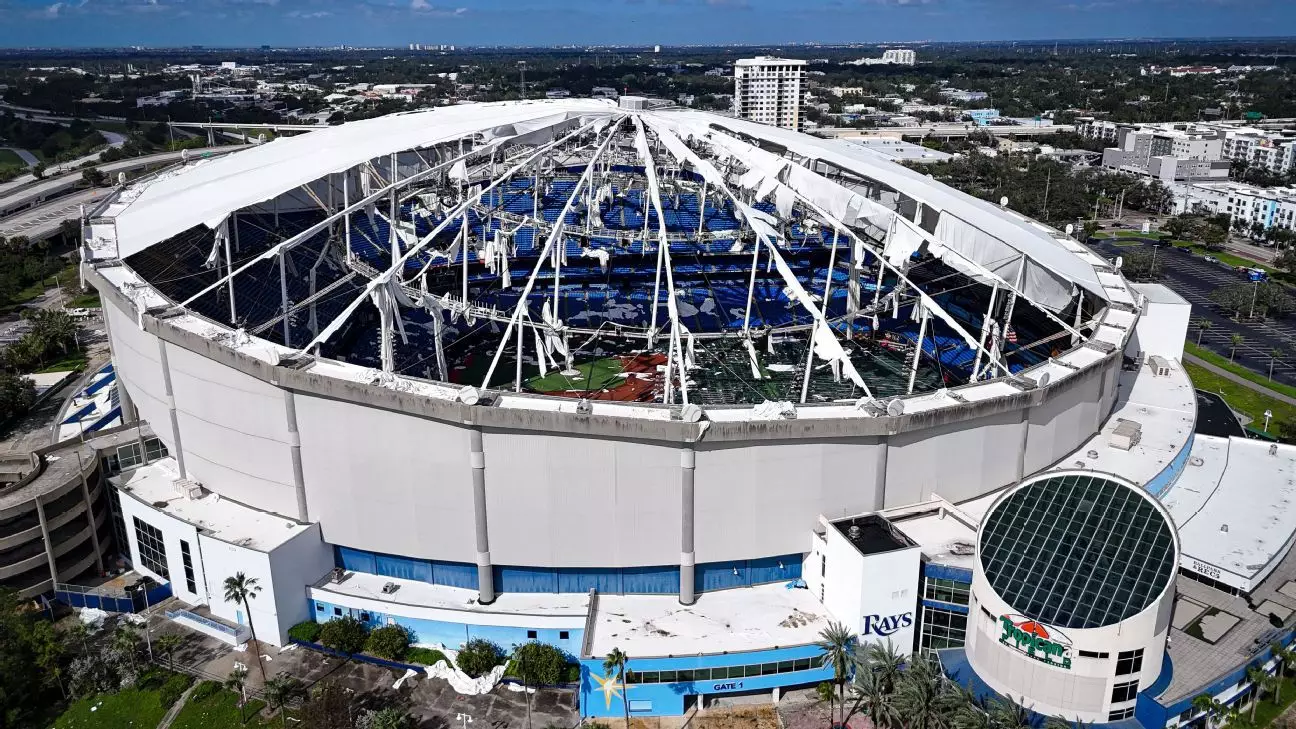In the wake of Hurricane Milton, which wreaked havoc across Florida, the Tampa Bay Rays’ home base, Tropicana Field, found itself in dire need of extensive repairs. The roof was severely damaged, leading to not only aesthetic issues but significant concerns regarding the structural integrity of the venue. The city of St. Petersburg is now grappling with the multifaceted challenge of restoring the ballpark while simultaneously planning for future developments that involve relocating the Rays to a new, state-of-the-art facility.
The scenario reflects broader themes seen in urban planning and disaster recovery, where immediate responses to crises are often complicated by longer-term strategies. With the Rays poised to play their 2025 season in Tampa, the urgency of repairs has heightened; plans must ensure that the stadium is ready to host fans in time for the 2026 season opener.
Matt Silverman, co-president of the Rays, communicated a clear message to the city officials emphasizing the team’s support for the reconstruction plan estimated at a hefty $55.7 million. This financial commitment falls under the current contractual agreement between the city and the Rays, necessitating significant engagement from local authorities. Silverman’s assertion that there was potential for the city to buy its way out of repairs signals an underlying tension between immediate financial burdens and the future legacy of the ballpark.
The response from the city has been tepid. Despite recognizing the importance of revamping Tropicana Field, there has been hesitance from city council members, some of whom are wary about the financial ramifications on a community still reeling from not just Milton, but prior hurricanes as well. Mayor Ken Welch’s focus on utilizing insurance and FEMA funds illustrates a pragmatic stance, considering the constraints of local budgets amid ongoing recovery efforts.
As the city navigates the intricacies of these repair plans, the timeline will be vital. Silverman has highlighted the risks associated with delays, indicating that even a partial season in the partially repaired Tropicana Field could disrupt both logistical operations and revenue streams for the team. The stakes, therefore, cannot be overstated. With the Major League Baseball expressing intent to oversee repair progress, clearly, multiple stakeholders are keenly focusing on timelines and outcomes.
Yet, the path is fraught with challenges. St. Petersburg’s council has been skeptical regarding financial commitments, which could stall repair efforts in the face of ongoing local recovery needs. Balancing these competing interests is a formidable task and reflects broader themes of community resilience amidst economic and environmental pressures.
The anticipated new downtown ballpark is not merely a replacement for Tropicana Field; it is emblematic of a transformative vision. The $1.3 billion redevelopment plan for the Historic Gas Plant District aims not only to create a modern home for the Rays but also to foster a vibrant community. The integration of affordable housing, cultural institutions, commercial enterprises, and recreational spaces highlights a strategy that seeks to rectify past societal displacements while also revitalizing the local economy.
The ambitious scale of the project indicates a long-term commitment that transcends just baseball; it aspires to forge an inclusive future for all St. Petersburg residents. For those who once inhabited what is now a major sports zone, the new developments provide both a nostalgic recapitulation of community legacy and a hopeful vision for what may lie ahead.
As St. Petersburg deliberates on financing and executing repairs to Tropicana Field, the stakes are high—not just for the ongoing operations of the Rays but for the future of the entire community. By committing to the reconstruction and integrating the ambitions of the Historic Gas Plant District, the city stands at a pivotal crossroads. It must balance immediate repair needs with a long-term vision that recognizes historical injustices while promoting economic revitalization. Should both visions coalesce, St. Petersburg could emerge stronger and more unified following this period of challenge, allowing the Rays to finally play at a facility that resonates with the community’s aspirations.

